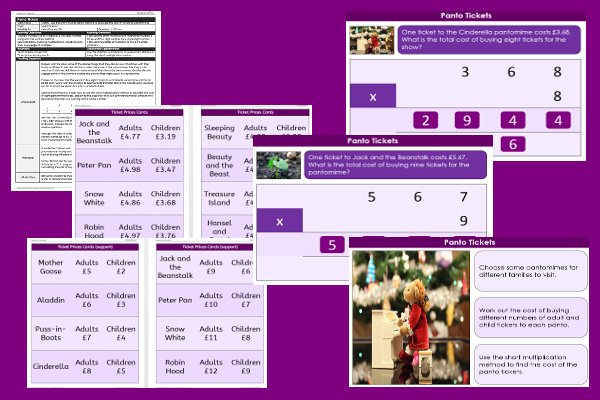Home > Key Stage Two > Maths > Number > Morey > Christmas Shopping
Lesson Four – Panto Tickets

This maths teaching pack for Key Stage Two gets the children to model how to use the short multiplication method to calculate the cost of buying tickets to different Christmas pantomimes for families.
The class can explain and illustrate how to use calculations in the times tables to support multiplication of larger numbers when completing each calculation.
Download this teaching pack including a lesson plan, classroom activities and an interactive presentation to model how to use the short multiplication method to calculate the cost of buying tickets to different Christmas pantomimes for families
Activities in this teaching pack include a set of differentiated cards to practise multiplying money amounts by single digit numbers to calculate the cost of buying tickets to different Christmas pantomimes for families with different numbers of adults and children.
The interactive presentation gets the children to explore how to use the short multiplication method to calculate the cost of buying tickets to different Christmas pantomimes.
This lesson is part of a maths scheme of work to get the children to practise using formal written methods for addition and multiplication to calculate the cost of buying different items to celebrate a family Christmas. There are teaching activities for shared learning, differentiated worksheets to support independent learning and interactive presentations to introduce concepts and key skills.
-

French Schools
Learn and practise speaking and writing French vocabulary and word phrases to describe some of the special things that can happen and are used in a school
-

French Sports
Practise speaking and writing French vocabulary words and phrases to describe some different sports and games
-

Roman Settlement
Explore and record what happened when the Romans settled in Ancient Britain and how it impacted the population and made changes to ways of life
-

3D Shape Labels
Identify and record how to label models and illustrations of some different 3D shapes to indicate their special properties
